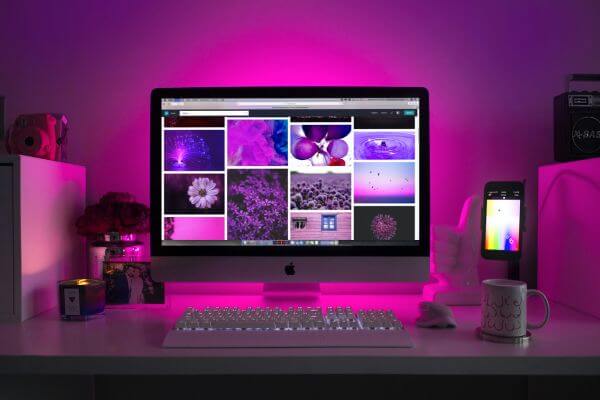In the world of web design, the perfect blend of design principles, aesthetics, and color choices can create a captivating online experience. Design is not just about functionality; it is also about visual appeal and aesthetics. A well-designed website engages users, communicates the brand’s message, and establishes a strong online presence. In this article, we will explore the importance of design and aesthetics in web design, with a particular focus on the selection of colors and palettes. We will provide valuable insights, tips, and techniques on how to achieve the perfect blend of design, aesthetics, and color choices.
The Power of Visual Appeal
One of the fundamental aspects of web design is visual appeal. Aesthetically pleasing websites have the power to capture users’ attention and create a positive impression. The use of colors, typography, layout, imagery, and other visual elements significantly impact how users perceive a website. By understanding the principles of visual design and incorporating them into your web design process, you can create a visually appealing website that engages and delights users.
Balancing Functionality and Aesthetics
While aesthetics play a vital role in web design, it is essential to maintain a balance between aesthetics and functionality. A visually stunning website may lose its effectiveness if it sacrifices usability and user experience. Strive to create a design that not only looks great but also provides a seamless browsing experience. Ensure that navigation is intuitive, content is easily accessible, and the overall user interface is user-friendly. By finding the perfect balance between aesthetics and functionality, you can create a website that both impresses users and fulfills their needs.
Consistency and Cohesion
Consistency and cohesion are key elements in creating a cohesive and visually appealing website. Consistency refers to using the same design elements throughout the website, such as colors, typography, and visual styles. Cohesion involves ensuring that all the design elements work harmoniously together to create a unified look and feel. By maintaining consistency and cohesion in your web design, you provide users with a seamless and enjoyable browsing experience.
The Role of Typography
Typography is an essential aspect of web design that often goes unnoticed. The choice of fonts and how they are used can greatly impact the overall aesthetics of a website. Select fonts that align with the brand’s personality and ensure readability across different devices and screen sizes. Pay attention to font sizes, line spacing, typography hierarchy, and consider how they complement the chosen color palette to create a visually pleasing typographic composition.
Optimizing for Responsive Design
In today’s mobile-driven world, responsive design is crucial for a successful website. Responsive design ensures that your website adapts to different screen sizes and devices, providing users with an optimal viewing experience. By prioritizing responsive design, you not only enhance usability but also improve the overall aesthetics of your website.
The Art of Visual Storytelling
Visual storytelling is a powerful technique that can elevate the aesthetics of your website. By using compelling imagery, videos, and graphics, you can engage users on an emotional level and effectively convey your brand’s message. Incorporate visual storytelling elements strategically throughout your website to create a memorable and immersive experience for users.
Color Choice and Palettes for Web Design
The selection of colors and palettes is a crucial aspect of web design that significantly impacts the overall aesthetics and user experience. Colors evoke emotions and have the power to influence how users perceive a website. Understanding color psychology and how different colors interact with each other is essential for making informed design decisions. Choose a color palette that aligns with the brand’s identity, conveys the desired mood, and ensures readability
Understanding Color Psychology
Color psychology plays a significant role in web design. Different colors evoke various emotions and have psychological associations. For example, warm colors like red and orange can create a sense of excitement and energy, while cool colors like blue and green can evoke feelings of calmness and tranquility. By understanding the psychological impact of colors, you can strategically incorporate them into your website design to elicit the desired emotional response from users.
Creating Harmonious Color Palettes
When choosing colors for your website, it’s important to create harmonious color palettes that work well together. A well-designed color palette enhances the overall aesthetics of your website and creates a visually pleasing experience. Consider using color theory principles such as complementary, analogous, or monochromatic color schemes to create balance and harmony in your design. Tools like color palette generators and online resources can help you explore and create cohesive color palettes that enhance your web design.
Considering Accessibility and Readability
In web design, accessibility and readability should never be compromised. It’s crucial to ensure that the chosen color palette maintains sufficient contrast between text and background to guarantee readability, especially for users with visual impairments. Accessibility guidelines, such as WCAG (Web Content Accessibility Guidelines), provide specific recommendations for color contrast ratios to ensure that content is accessible to all users. By prioritizing accessibility, you create an inclusive user experience and demonstrate a commitment to equal access.
Using Color to Guide User Attention
Colors can be used strategically to guide user attention and highlight important elements on your website. By employing contrasting colors, vibrant accents, or subtle color gradients, you can direct users’ focus to specific areas, such as call-to-action buttons or key information. Use color strategically to create visual hierarchy and improve the user’s understanding of the content structure.
In the world of web design, the perfect blend of design principles, aesthetics, and color choices can transform a good website into a great one. By understanding the power of aesthetics, maintaining a balance between functionality and visual appeal, embracing consistency and cohesion, optimizing typography and responsive design, harnessing the art of visual storytelling, and making informed color choices, you can create visually stunning websites that leave a lasting impact on users.
The selection of colors and palettes is a critical aspect of web design. By understanding color psychology, creating harmonious color palettes, considering accessibility and readability, and using color strategically to guide user attention, you can enhance the overall aesthetics and user experience of your website. Remember to conduct user testing and gather feedback to continuously refine your design choices.
So, embrace the power of design and aesthetics, experiment with color choices, and strive for excellence in your web design journey. By blending design principles, aesthetics, and thoughtful color choices, you can create captivating websites that engage users, communicate your brand’s message, and leave a lasting impression.




